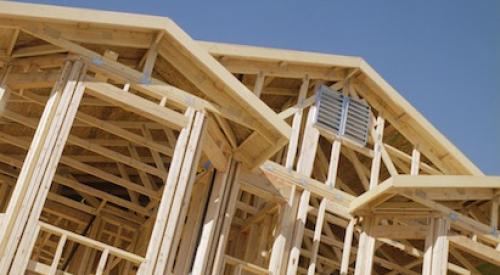Every now and then, we each allow ourselves to drift back and contemplate the bygone robustness of past housing markets, the go-go days. But so much time has elapsed that it is getting more difficult to accurately recollect those days — the mindset of hiring anyone who could fog a mirror, purchasing lots in “B-minus” locations next to towering power lines in an effort to “feed the machine.” We remember the volume and revenue, but we often forget the now horrifying inefficiency.
How long has it been since the market was robust? The answer depends on where you operate your business. A builder I know in the desert West can pinpoint the date when he knew the bubble had burst. It was a Monday morning in mid-June 2005. Officially, housing kept growing through 2007, but this builder knew the market had irrevocably turned when he reviewed the previous weekend’s sales activity and was shocked at the huge drop in traffic. At that moment, he says, he knew it was over, particularly because he had invested in additional promotions to drive more buyers through his models.
For many of us, it is getting to be a very long time since our businesses coursed with strong activity. A pessimistic colleague surmises that when it is all over, it will have been a lost decade. My point back to that colleague: it all depends on how you look at it. Let’s look at all of the “feed the machine” types of decisions we made. Let’s acknowledge the vastly subsidized underpinnings and false assumptions that inflated the housing bubble. Can we perhaps, from that perspective, view 1997 to 2007 as being unnaturally “lost” in some ways? I think so.
The good news is that in the spring of 2012, the industry appears to be healing. The patient is sitting up and taking nourishment. Signs of firmer footing can be found in the increasing number of “improving” metro markets as judged by the NAHB’s Improving Market Index, which stands at more than 100, up from a couple of dozen eight months ago. It can be found in the billions in fines paid by banks to clear up “robo-signing” irregularities that, for a time, inhibited foreclosures and their market-clearing effect. Better conditions can also be seen in a slowly improving economy reducing the high unemployment rate in some areas. Finally, there is increasing evidence that more banks are getting back into the business of lending to builders.
So how are builders responding? This issue of Professional Builder is devoted to quantifying and measuring the revenue and closings of the nation’s largest home builders, the Housing Giants. But we all know that numbers often don’t tell the whole story. That is why we’ve cleared the decks and gone in greater depth to uncover important trends and ideas from these Giants in hopes that they serve as guideposts for others in this recovery.
In general, the 235 firms on the Housing Giants list have learned lessons from the past. They are rooting out inefficiency, embracing technology to boost productivity and customer experience, and finding ways to overcome regulatory hurdles to get Americans into new homes faster. After all, there is evidence of huge pent-up demand, and it will only grow as rents slowly climb and begin to exceed the cost of homeownership.
Between the positive news and the good business ideas presented in this issue, let’s reflect less on the past. The time is right for striking out in new directions.












